Uber Advanced Technology Group is a self-driving technologies engineering team whose R&D Center is housed within historic Pier 70. The center’s four massive buildings, constructed between 1885 and 1937 for ship repair, now extend the site’s legacy of transportation endeavors into the 21stC.
Urban Design & Architecture Design Awards 2018
First Award | Category: Corporate Interior
Architects: Marcy Wong
Studio Name: Marcy Wong Donn Logan Architects
Team Members: Marcy Wong, Kent Royle, Ketki Shah
Country: United States
Website: www.wonglogan.com
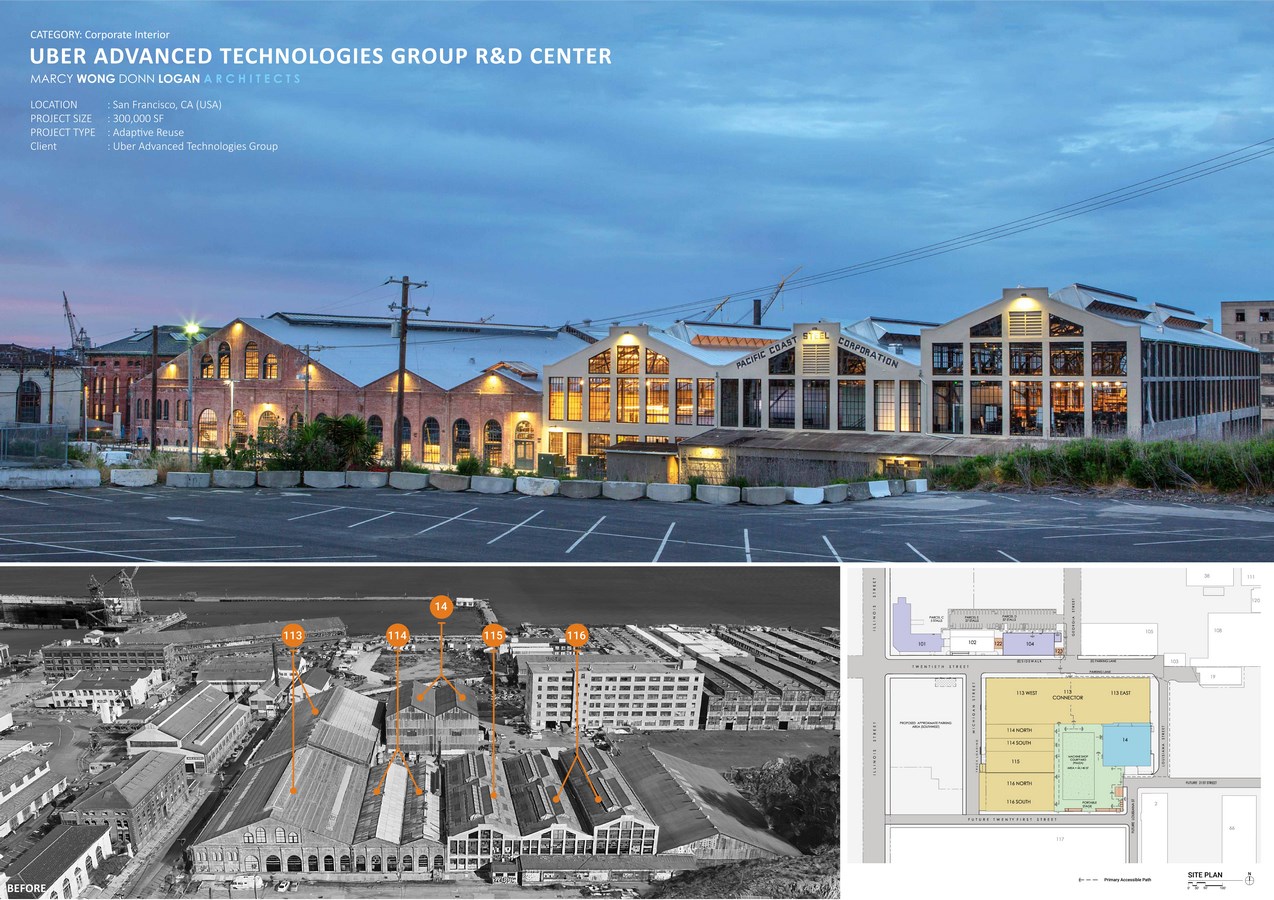
Challenges of upgrading physically deteriorating and seismically deficient historic landmark edifices for a modern company, are both technical and architectural. The insertion of mezzanines, bridges and stairs preserves the historic perimeter brick walls and was integral to the seismic upgrading strategy.
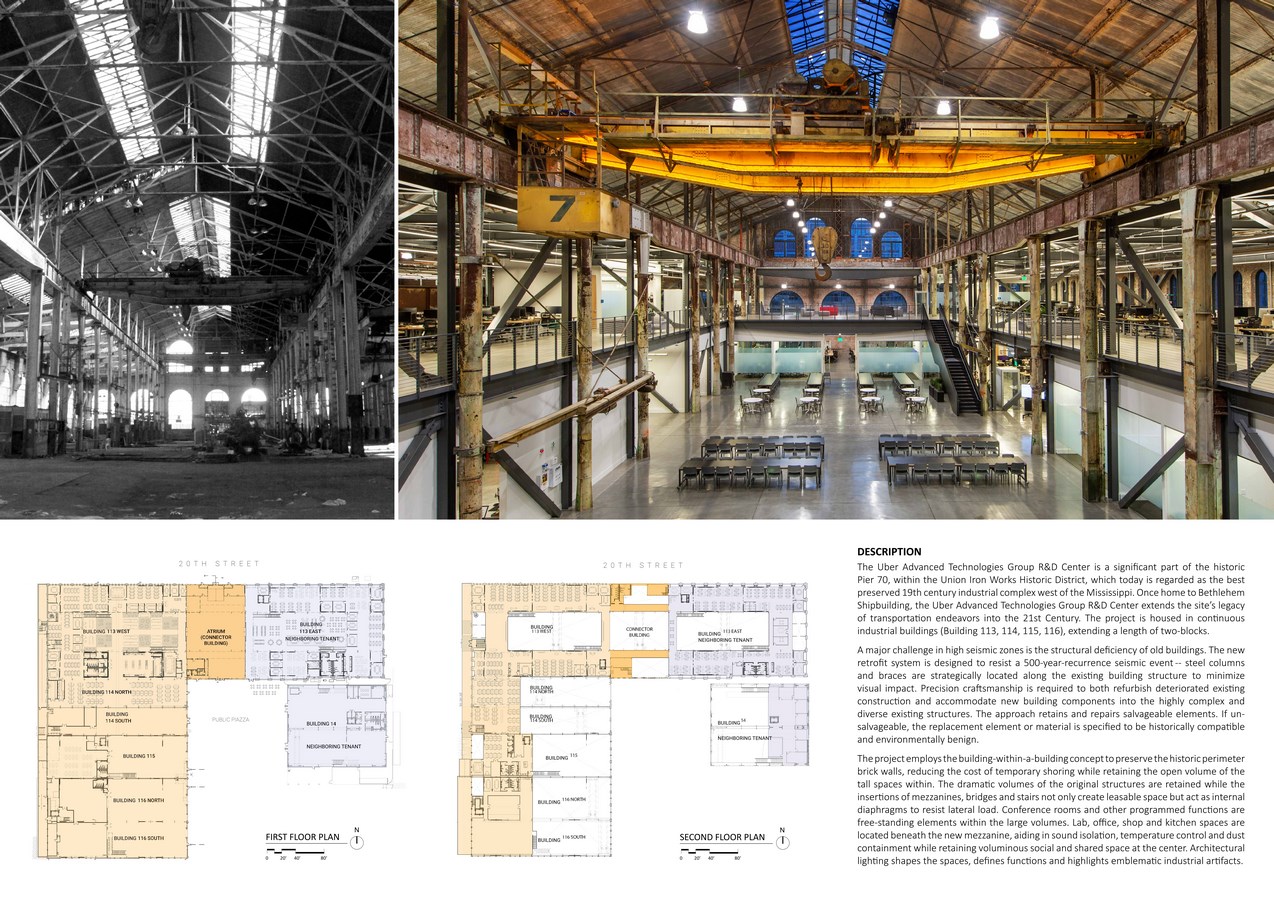
The building conditions were beyond decrepit, and the danger of earthquake triggered collapse was so dire that the construction site included “safe areas” within the cavernous building for workers to take emergency shelterat a first tremor. It is to be expected that a 19thC building in San Francisco is not designed for earthquake.However, the Pier 70 buildings’ vulnerability was exacerbated by many years of vacancy during which vandalism,the stripping of materials and artifacts, and weather intrusion occurred. An egregious example: the water exposed masonry at Building 113 was deteriorated to the point of crumbling to powder. Elsewhere were more areas where bricks needed to be replaced, and throughout, the brick needed to be re-pointed. The windows and skylights were in some cases repairable, and in other cases too deteriorated to fix. The replacement materials were meticulously specified to meet current code requirements and historic compatibility.
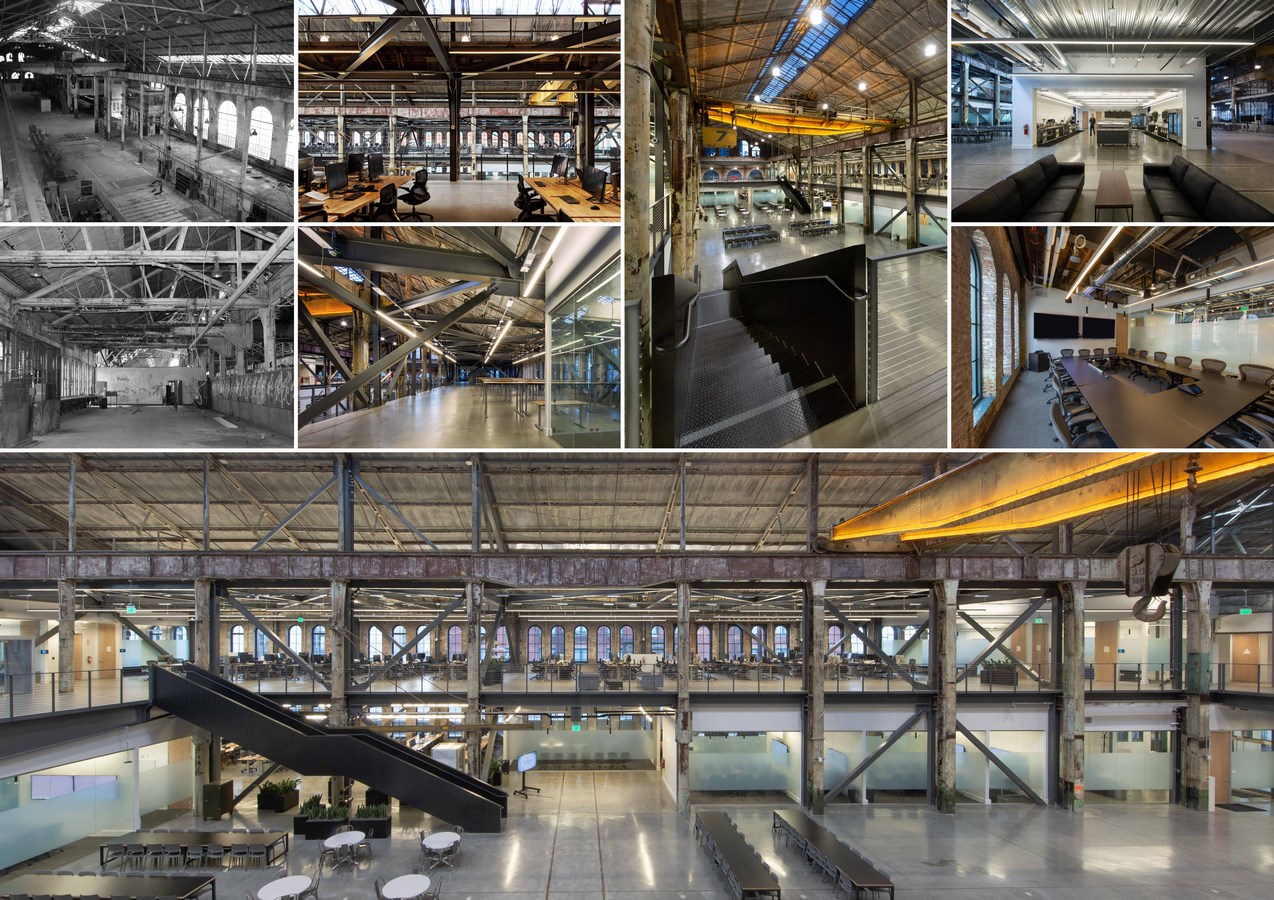
A major challenge in high seismic zones is the structural deficiency of old buildings, especially at unreinforced masonry. The new retrofit system is designed to resist a 500-year-recurrence seismic event; steel columns and braces are strategically located along the existing building structure to minimize visual impact. New concrete mezzanines not only add leasable area, but also brace the historic brick walls at mid-height. Full height walls have upper portions sheathed in clear, multi wall poly-carbonate to maintain the building’s original site lines. Demising large industrial spaces with steel and glass walls preserve the spatial character of the cavernous industrial buildings for the client and its neighbors. Conference rooms and other programmed functions are free-standing elements within the large volumes. Lab, shop and kitchen spaces are located under mezzanines, allowing for sound isolation, temperature control and dust containment. To condition the cavernous spaces, natural ventilation augmented with ceiling fans and radiant heat are provided.
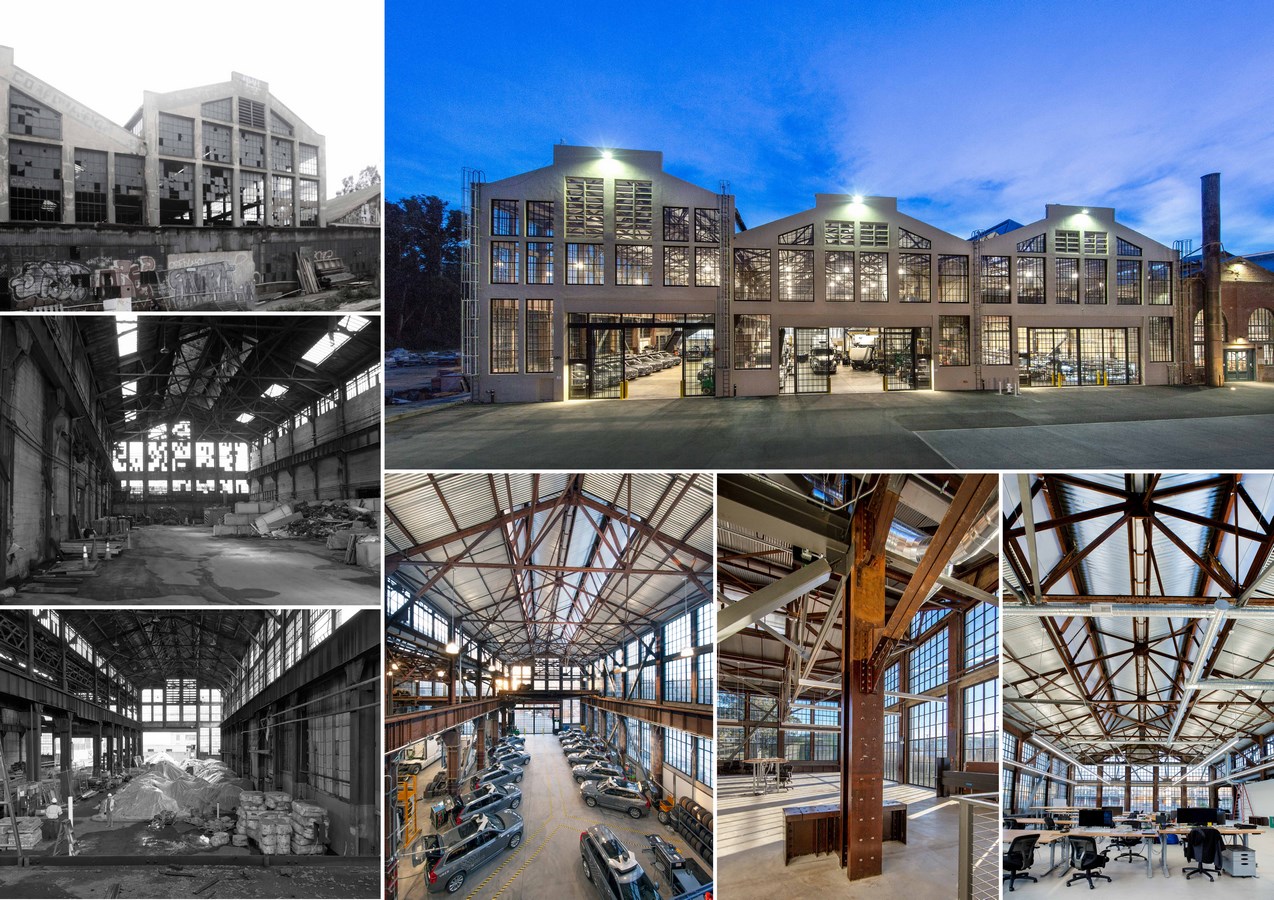
Precision craftsmanship is required to both refurbish deteriorated existing construction and accommodate new building components into the highly complex and diverse existing structures. The approach retains and repairs salvageable elements. If unsalvageable, the replacement element or material is specified to be historically compatible and environmentally benign. In addition, the conservation and environmental strategies include: maximize day lighting through sky-lighting and windows, enhance natural ventilation; provide radiant heating; specify permeable concrete at exterior paving.


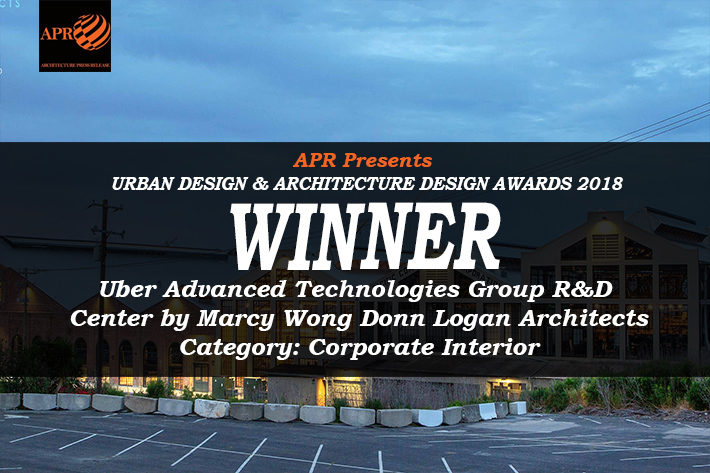
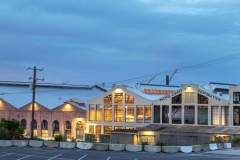
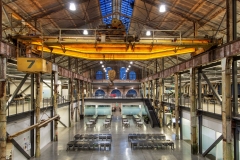
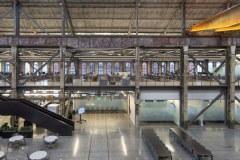
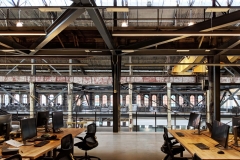
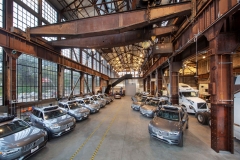
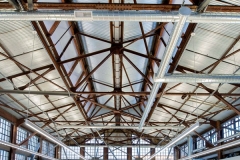
Urban Design & Architecture Design Awards 2018 - Results Announced | HAW Magazine
[…] Uber Advanced Technologies Group R&D Center by Marcy Wong Donn Logan Architects First Award | Category: Corporate Interior Architects: Marcy Wong Studio Name: Marcy Wong Donn Logan Architects Team Members: Marcy Wong, Kent Royle, Ketki Shah Country: United States Website: www.wonglogan.com […]